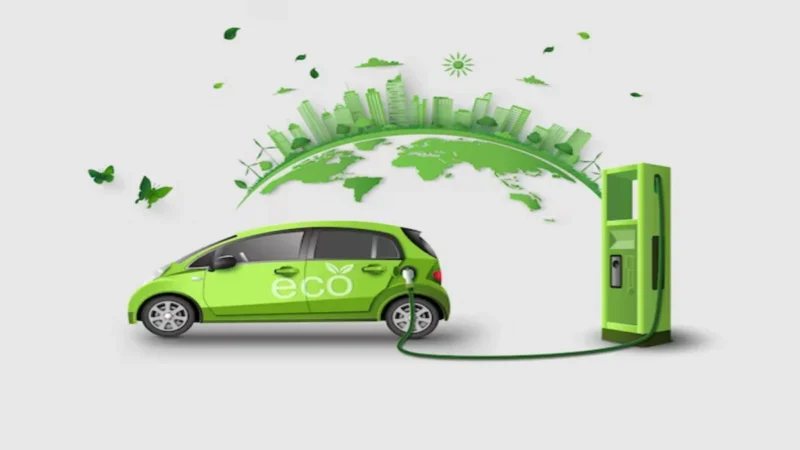Electrifying Change: The Era of Radical Transparency in Global EV Adoption

In the realm of environmental sustainability and transportation, one of the most prominent revolutions is the transition from traditional internal combustion engine (ICE) vehicles to electric vehicles (EVs). This paradigm shift not only addresses the urgent need to reduce greenhouse gas emissions but also signifies a larger societal transformation towards radical transparency in the automotive industry.
The Rise of Electric Vehicles
Electric vehicles have gained immense popularity in recent years, and their adoption continues to accelerate around the world. Factors such as advancements in battery technology, government incentives, and growing environmental consciousness among consumers have all played a significant role in driving this change. However, the most profound shift lies in the approach to transparency that underpins this transformation.
Radical Transparency
Radical transparency is a concept that embraces openness, honesty, and the sharing of information at a level that was previously unseen in many industries. In the context of EV adoption, this means providing consumers with detailed data about the environmental and social impacts of the entire lifecycle of an EV, from production to disposal. It also involves making information available about the sources of the electricity used to charge these vehicles, which can come from various energy generation methods, including coal, natural gas, renewables, or a combination of these.
Life Cycle Assessment
To understand the concept of radical transparency in EV adoption, one must first examine the Life Cycle Assessment (LCA) of electric vehicles. An LCA evaluates the environmental impact of a product or technology from its creation, through its use, and up to its disposal. For EVs, this assessment includes the manufacturing of the vehicle, the source of electricity used for charging, and the eventual recycling or disposal of the vehicle and its components.
This level of transparency allows consumers to make informed decisions regarding the environmental impact of their vehicle choice. They can assess the carbon footprint of their chosen EV, compare it to traditional ICE vehicles, and select models that align with their sustainability goals. Furthermore, it encourages manufacturers to improve the environmental performance of their vehicles at every stage, fostering a culture of continuous improvement.
Environmental Benefits
The environmental benefits of electric vehicles are undeniable. When charged with electricity generated from renewable sources such as wind, solar, or hydroelectric power, EVs produce zero tailpipe emissions. Even when the electricity source includes some fossil fuels, EVs still tend to produce fewer emissions than their gasoline or diesel counterparts.
Furthermore, electric vehicles are significantly more energy-efficient, converting a higher percentage of the energy from the grid into actual vehicle movement, while ICE vehicles waste a substantial amount of energy as heat. As the electricity grid becomes cleaner over time, the environmental advantages of EVs will only grow.
Charging Infrastructure
Radical transparency in the EV industry extends to charging infrastructure as well. Consumers are increasingly provided with information on the carbon intensity of the electricity used at different charging stations. This empowers EV owners to select charging locations that align with their environmental values, opting for cleaner energy sources whenever possible.
In addition, the growth of public charging networks is helping to eliminate one of the significant barriers to EV adoption: range anxiety. As charging infrastructure becomes more widespread and efficient, consumers are more likely to make the transition to electric vehicles.
Consumer Awareness
The era of radical transparency in global EV adoption also hinges on consumer awareness and education. Many consumers may not be aware of the environmental benefits of EVs or may hold misconceptions about their environmental impact. Manufacturers, governments, and environmental organizations are increasingly working to educate the public about the advantages of EVs, the availability of charging infrastructure, and the importance of selecting clean energy sources for charging.
Government Policies
Government policies and incentives have played a pivotal role in driving the transition to electric vehicles. Various countries have implemented subsidies, tax breaks, and other incentives to make EVs more affordable and appealing to consumers. These policies not only make EVs more accessible but also promote the development of cleaner energy generation methods, creating a more sustainable energy grid.
The Path Forward
As we move further into the era of radical transparency in global EV adoption, the automotive industry is becoming more responsive to consumer demands for cleaner and more sustainable transportation options. This shift towards transparency not only benefits the environment but also empowers consumers to make more informed choices. With advancements in technology and continued growth in charging infrastructure, the electrification of transportation is set to continue its upward trajectory, contributing significantly to the reduction of greenhouse gas emissions and the protection of our planet.
Key Takeaways
The electrification of the automotive industry is not merely about a change in propulsion technology but also a shift towards radical transparency. As consumers gain access to more information about the environmental and social impacts of their vehicles, they are better equipped to make choices that align with their values. With the support of government policies and continued innovation in the industry, the global adoption of electric vehicles is poised to reshape transportation and lead us towards a more sustainable and transparent future.
FAQs:
Electric Vehicles (EVs) are automobiles that are powered by electricity stored in batteries. They rely on electric motors to drive the vehicle, rather than internal combustion engines like traditional gasoline or diesel cars.
EVs produce zero tailpipe emissions, meaning they do not emit carbon dioxide or other harmful pollutants during operation. Even when accounting for emissions from electricity production, EVs typically have a lower overall carbon footprint compared to conventional gasoline cars, especially if charged with electricity from renewable sources.
The production of EV batteries does have an environmental impact due to the mining of raw materials, energy consumption, and the manufacturing process. However, advancements are being made to reduce this impact by improving battery efficiency, recycling materials, and using more sustainable sources for battery components.
Yes, electric vehicles are generally more energy-efficient. They convert a higher percentage of the energy from the grid into vehicle movement, while ICE vehicles waste a significant amount of energy as heat. This efficiency is one of the reasons EVs have a lower overall environmental impact.
The driving range of an electric vehicle depends on the specific model and the capacity of its battery. Ranges vary widely, with some EVs capable of traveling over 300 miles on a single charge. Improvements in battery technology continue to extend the range of EVs.


